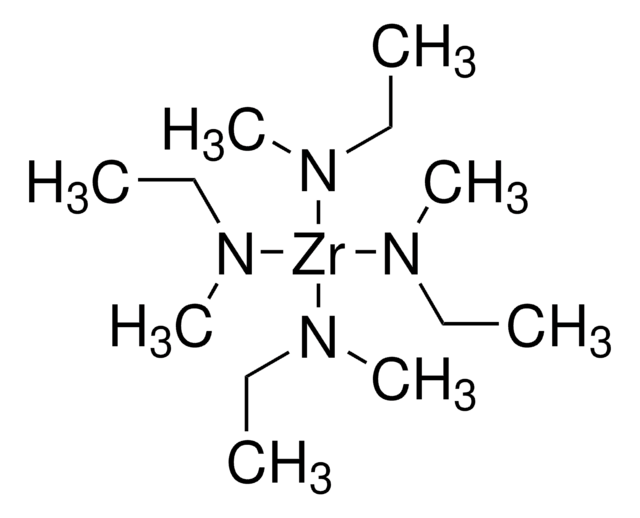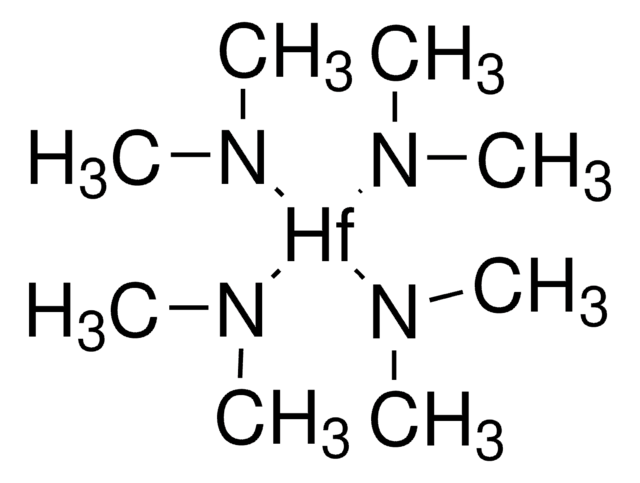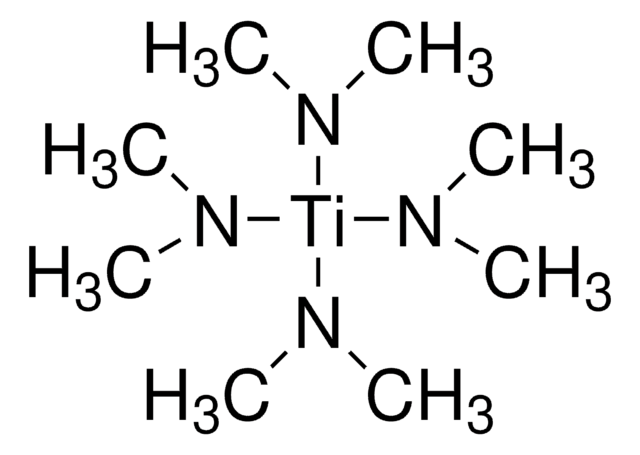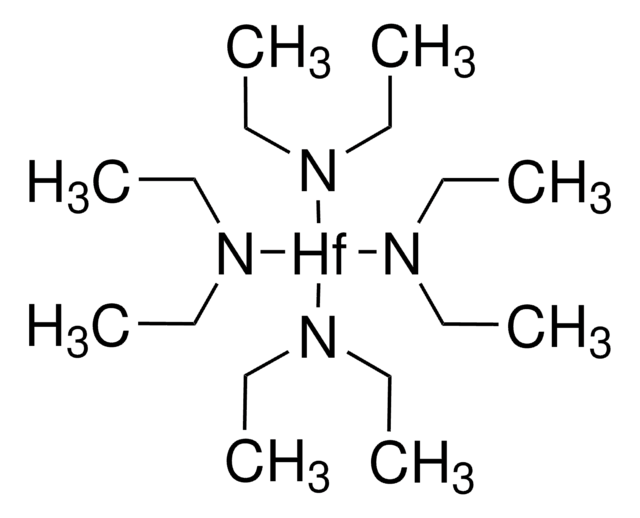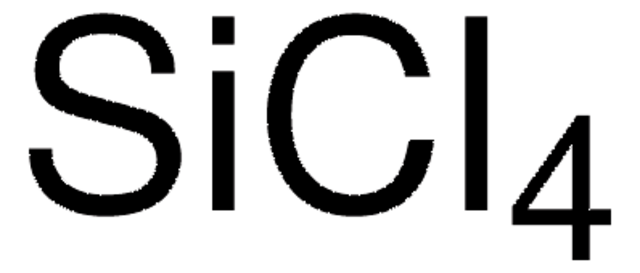725544
Tetrakis(ethylmethylamido)hafnium(IV)
packaged for use in deposition systems
Sinónimos:
TEMAH, Tetrakis(ethylmethylamino)hafnium(IV)
About This Item
Productos recomendados
form
liquid
reaction suitability
core: hafnium
reagent type: catalyst
bp
78 °C/0.01 mmHg (lit.)
mp
<-50 °C
density
1.324 g/mL at 25 °C (lit.)
storage temp.
2-8°C
SMILES string
CCN(C)[Hf](N(C)CC)(N(C)CC)N(C)CC
InChI
1S/4C3H8N.Hf/c4*1-3-4-2;/h4*3H2,1-2H3;/q4*-1;+4
InChI key
NPEOKFBCHNGLJD-UHFFFAOYSA-N
¿Está buscando productos similares? Visita Guía de comparación de productos
General description
Application
TEMAH is well-suited for ALD because its adsorption is self-limiting on a number of substrates including glass, indium-tin oxide(ITO), Si(100), and two-dimensional materials like MoS2. TEMAH also conveniently reacts with either water or ozone as the oxygen-source in the ALD process.
Features and Benefits
- Steel cylinder connected to 316 stainless steelball-valve
- 1/4 inch male Swagelok VCR connections
signalword
Danger
hcodes
Hazard Classifications
Acute Tox. 4 Oral - Eye Dam. 1 - Flam. Liq. 2 - Skin Corr. 1B - STOT SE 3 - Water-react 1
target_organs
Respiratory system
supp_hazards
Storage Class
4.3 - Hazardous materials which set free flammable gases upon contact with water
wgk_germany
WGK 3
flash_point_f
51.8 °F - closed cup
flash_point_c
11 °C - closed cup
Elija entre una de las versiones más recientes:
¿Ya tiene este producto?
Encuentre la documentación para los productos que ha comprado recientemente en la Biblioteca de documentos.
Los clientes también vieron
Artículos
igma-Aldrich.com presents an article regarding the savannah ALD system - an excellent tool for atomic layer deposition.
Nanocomposite Coatings with Tunable Properties Prepared by Atomic Layer Deposition
High Purity Metalorganic Precursors for CPV Device Fabrication
The properties of many devices are limited by the intrinsic properties of the materials that compose them.
Nuestro equipo de científicos tiene experiencia en todas las áreas de investigación: Ciencias de la vida, Ciencia de los materiales, Síntesis química, Cromatografía, Analítica y muchas otras.
Póngase en contacto con el Servicio técnico